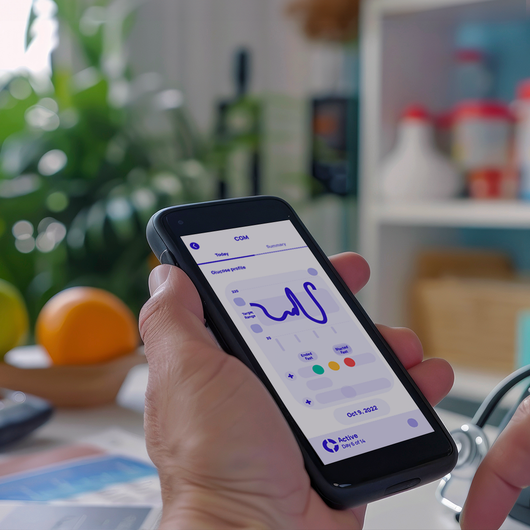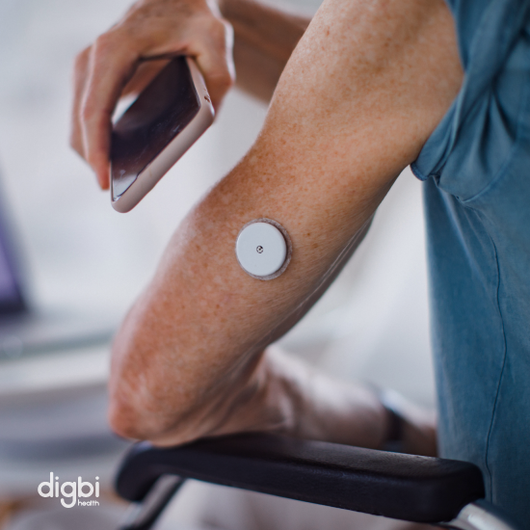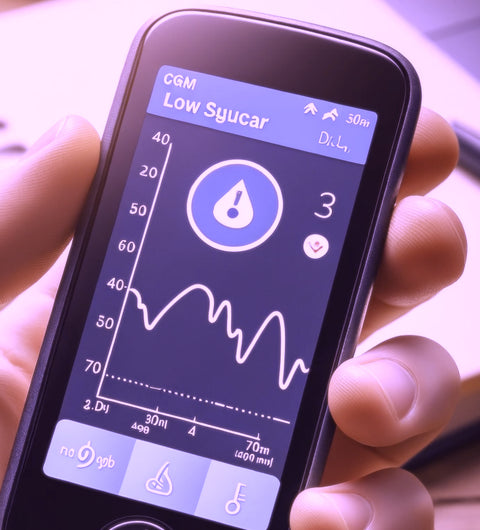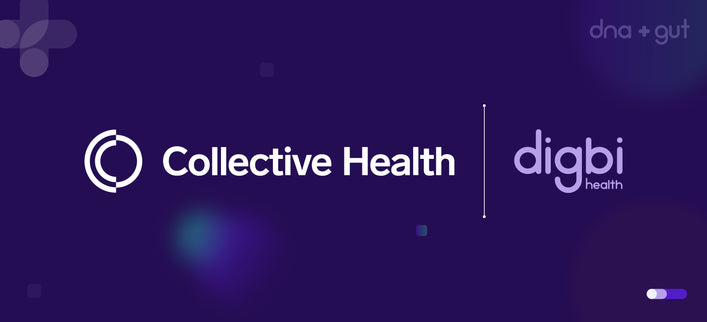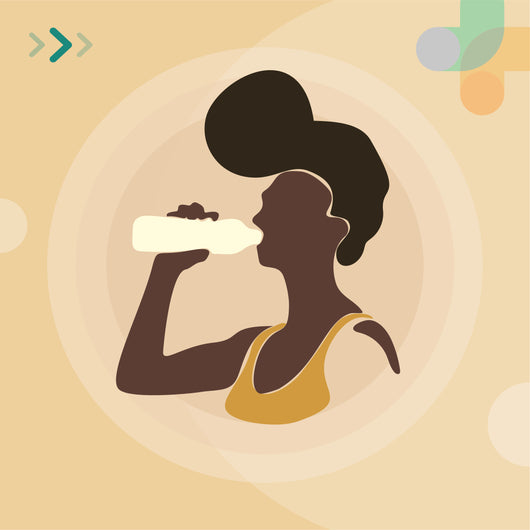Your body’s response to food is unique, and understanding how it affects your exercise can help you perform better. Instead of following one-size-fits-all diet recommendations, a Continuous Glucose Monitor (CGM) provides real-time insights into how different foods impact your blood sugar, energy, and recovery.
When your blood sugar levels remain steady—meaning fewer spikes and drops— you’re less likely to feel tired during exercise, and your muscles will be better fueled for recovery. Studies show that athletes and individuals with stable blood sugar levels tend to perform better during exercise. CGM gives you the data to adjust your food intake so you can get the most out of every workout.
How Your Body Uses Fuel During Exercise
Your body needs energy to move, and it gets this energy from the food you eat. During exercise, the two main sources of fuel are glucose (from carbohydrates) and fat. When you do low-intensity activities like walking or yoga, your body primarily burns fat. But when the intensity increases—like during running or weightlifting—your body switches to burning glucose because it provides energy more quickly.
Glucose is stored in your muscles as glycogen. During intense exercise, your body taps into these glycogen stores to keep you going. If glycogen runs low, you may feel fatigued and struggle to maintain your performance. This is why managing glucose levels is crucial, as it directly impacts your energy and stamina.
How CGM Helps
By using a CGM, you can see how your glucose levels respond to different pre-workout meals. For example, if you eat a meal high in carbohydrates and notice a sharp rise followed by a crash in your glucose, you’ll know it may not be the best choice before exercise. The goal is to find a meal that provides steady energy without causing large spikes and drops in blood sugar.
Adjusting Your Fuel During Longer Workouts
For longer workouts, such as running, cycling, or hiking, your body uses up its glucose stores over time. When these stores are depleted, you may start to feel sluggish or light-headed. This is why athletes often refuel with snacks or energy drinks during longer exercise sessions.
When you eat carbs during exercise, your body converts them into glucose, which keeps your muscles energized. But it’s important to get the balance right: eating too little can lead to fatigue, while eating too much can cause a big spike in blood sugar, which might leave you feeling tired later.
How CGM Helps
With a CGM, you can track your blood sugar levels during exercise. If your glucose starts to dip, it’s time to refuel with a small snack to prevent energy crashes. At the same time, you can avoid overloading on carbs by monitoring how your body responds and adjusting your intake to maintain a steady energy level.

Post-Exercise: Replenish Without Spikes
After a workout, your muscles are low on glycogen, and it’s important to replenish those stores. Eating carbohydrates after exercise helps restore glycogen, which is crucial for recovery. However, eating too many carbs too quickly can cause a large spike in blood sugar. When blood sugar rises sharply, your body releases a hormone called insulin to bring it back down. Too much insulin can lead to energy being stored as fat instead of being used to refuel your muscles.
The goal after exercise is to eat enough carbs to restore glycogen without causing a spike in blood sugar. Protein and fiber can help slow down digestion, making it easier to keep glucose levels stable and support muscle repair.
How CGM Helps
Your CGM can show you how your blood sugar reacts to your post-exercise meal. If you notice a spike of more than 30 mg/dL, it may be a sign that you ate too many carbs or need to add more protein and fiber to your meal to slow the glucose release. Keeping glucose stable after exercise supports better recovery and ensures your body is using the food you eat efficiently.
How Carb Loading Works
Carb loading is a common strategy used by athletes before endurance events like marathons. The idea is to increase your intake of carbohydrates in the days leading up to the event to maximize glycogen stores in your muscles. This can give you more energy to perform at your best during long activities.
However, it’s easy to overdo carb loading. If you eat too many carbs, your blood sugar can spike, and not all of the glucose will be stored as glycogen. Instead, some of it will be converted to fat. Finding the right balance is key to effective carb loading without causing unnecessary spikes in blood sugar.
With a CGM, you can monitor how your body handles increased carb intake during carb-loading phases. If your glucose levels remain elevated for hours after a meal, it’s a sign that you may need to reduce your carb intake or spread it out over several meals to avoid spikes. This helps ensure that the extra glucose is being stored as glycogen rather than fat.
Recreate Your Best Performances
Every workout or race gives you a chance to learn what works best for your body. By reviewing your CGM data, you can see patterns in your nutrition and performance. For example, if you had a great workout, you can look at what you ate before and during the session and how your blood sugar responded. This helps you identify the ideal food and timing that led to your success.
Stable glucose levels during exercise indicate that your body is efficiently using energy. Big fluctuations in glucose can make you feel tired and affect your performance. By analyzing your CGM data, you can recreate the conditions that helped you perform at your best.
How CGM Helps
CGM data, along with your food and exercise logs, can provide valuable insights into what worked well for you. If your glucose was steady on a high-performing day, aim to repeat that eating pattern before your next workout. This helps you optimize your routine and consistently perform at your best.
How Digbi Health Program Can Help
The Digbi Health Program provides all the tools and guidance you need to optimize your exercise routine with CGM data. Follow these steps to get started and maximize your results:
- Wear a CGM: Make sure to wear it consistently during your exercise. If you have already used your CGM, you can purchase one here.
- Integrate Apple Health, Google Fit, or Fitbit: Connect your wearable fitness tracker to the Digbi Health platform. This allows your exercise data (like steps and activity) to sync with Digbi so that we can track your progress and analyze your performance.
- Post Photos of Your Meals: Take photos of your meals and upload them through the Digbi Health app. By doing this, you and your coach can see how your meals affect your blood sugar levels and how to adjust your nutrition for better performance.
- Ask Your Coach for a Summary Report: At the end of your CGM cycle, reach out to your Digbi Health coach and request a personalized summary report. This report will give you insights into how your blood sugar responds to food and exercise, helping you make data-driven adjustments to improve your results.
By following these steps, the Digbi Health Program ensures you can make the most of your CGM data, tailor your nutrition to your unique needs, and perform at your best.



